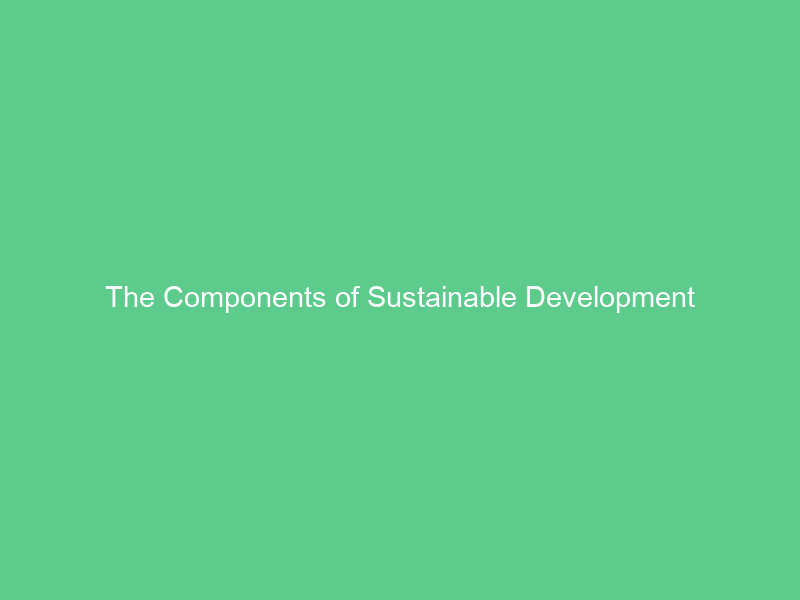Sustainable development refers to economic growth that does not harm the environment or limit future generations’ ability to meet their own needs. To achieve this goal, global governance must prioritize planet boundaries, life support systems and reconnecting with nature.
Countries assign different values to these sustainability factors, so the goal is to bring all three into alignment.
Economic Development
Economic development, including the exploitation of natural resources and investments for technological progress, is just one aspect of sustainable development. But sustainable development also involves people’s personal development and unlocking their full potential.
Sustainable economic development seeks to meet people’s needs while protecting the environment. This means not exploiting resources so intensively as to exhaust them or producing waste that exceeds environmental capacity for disposal, while at the same time not overusing natural or renewable resources so extensively as to diminish their effectiveness.
Sustainable development models entail three interdependent pillars, such as economy, environmental protection and social development. Failure in any one area could have adverse repercussions for all three; so it is imperative that progress be made across the board. In 2015, the United Nations adopted 17 Sustainable Development Goals with specific targets set to be accomplished by 2030 – The SDSN publishes an SDG Tracker so as to monitor this goal progress towards meeting them.
Social Development
A key element of sustainable development is improving people’s lives, from accessing education and decent jobs to living safely in an inclusive society. Sustainable development practices should respect basic human rights while simultaneously working toward equality; for instance by eliminating disparities related to gender, ethnicity, ability or sexual orientation.
Sustainable projects that support social and economic progress while protecting the environment and equity are integral to combatting poverty, climate change and other global issues. Such multi-stakeholder partnerships often include representation from private businesses, government agencies and non-government organizations.
Social development majors teach students how to design and implement projects related to this area of sustainability. Furthermore, this major offers a distinctive and challenging set of courses that provides opportunities to study topics ranging from social activism and community-based development initiatives through political economy of professions and contemporary social issues. Thus enabling them to gain a comprehensive knowledge of both challenges and opportunities in this important arena of sustainability.
Environmental Protection
As part of sustainable development, environmental protection refers to activities which ensure long-term ecological balance and planetary sustainability, such as monitoring economic activities for any potential negative environmental impact. Sometimes considered one of three domains or pillars of sustainable development, environmental protection remains an integral component of all development policies.
Sustainable development seeks to balance the competing demands of economic prosperity, social inclusion and environmental protection. It involves developing economic models that avoid environmental degradation while making use of natural resources without permanent loss. Public policy choices also aim to ensure no one falls through the cracks.
The United Nations 2030 Agenda for People, Planet and Prosperity sets 17 global goals focused on sustainable development, with environmental sustainability being among them. These include “promote sustained, inclusive and equitable economic growth; full employment with decent work for all; reduce inequality within and between countries; achieve gender equality and empower women”.
Governance
Governance is an essential element of sustainable development. This involves processes to ensure companies operate responsibly while respecting both society and the environment. Furthermore, governance includes encouraging renewable energy sources like wind or solar power as well as economic models that promote equality over waste or resource exploitation.
In 2015, world leaders made an unprecedented commitment to safeguard the future of humanity and planet. They adopted 17 global Sustainable Development Goals with goals focusing on eliminating poverty and hunger while decreasing inequality and protecting natural resources on our planet.
Countries publish annual reports to assess progress towards the Sustainable Development Goals and assess progress made toward them. These reports help identify achievements, challenges and gaps, promote cooperation in the international system and include an open and transparent approach which respects human rights while meeting the needs of vulnerable groups and those most marginalised by society.

